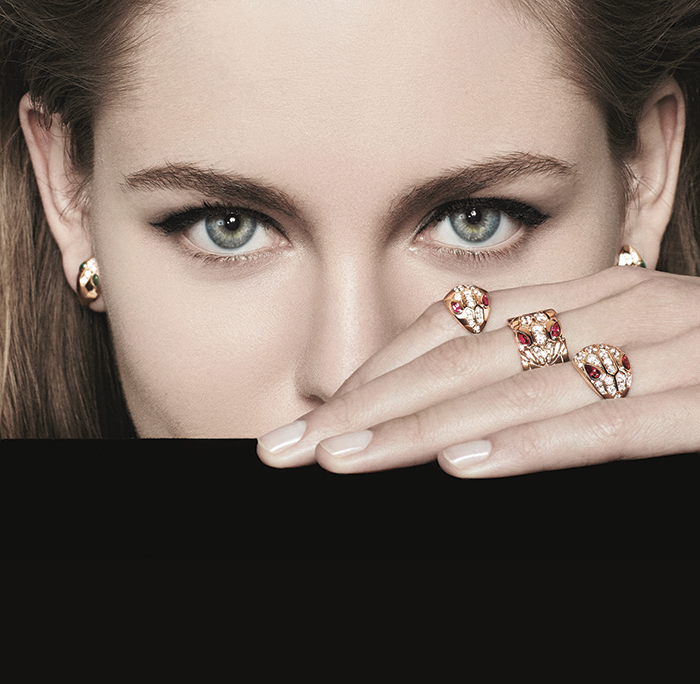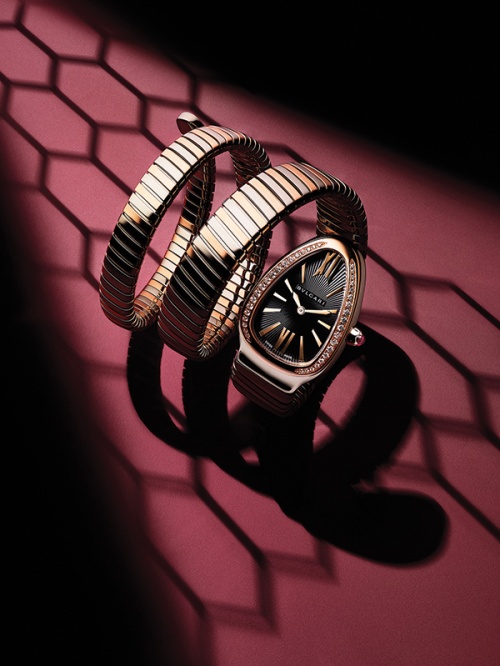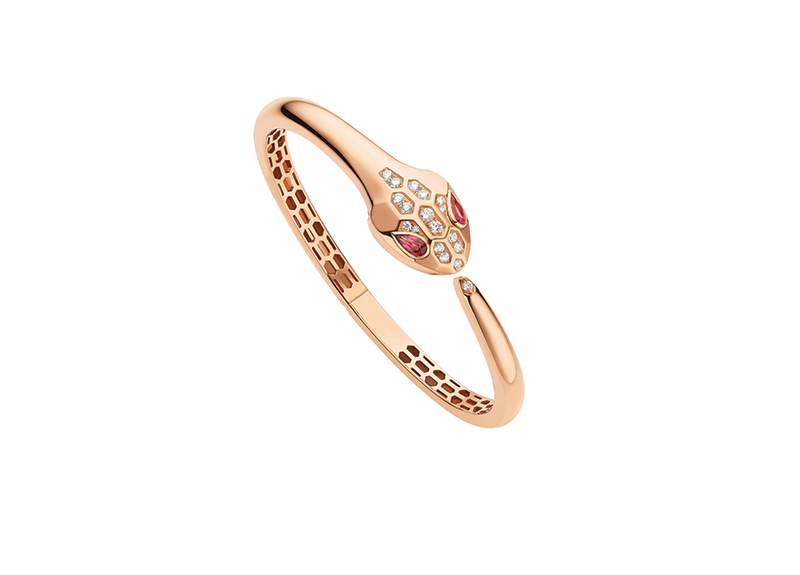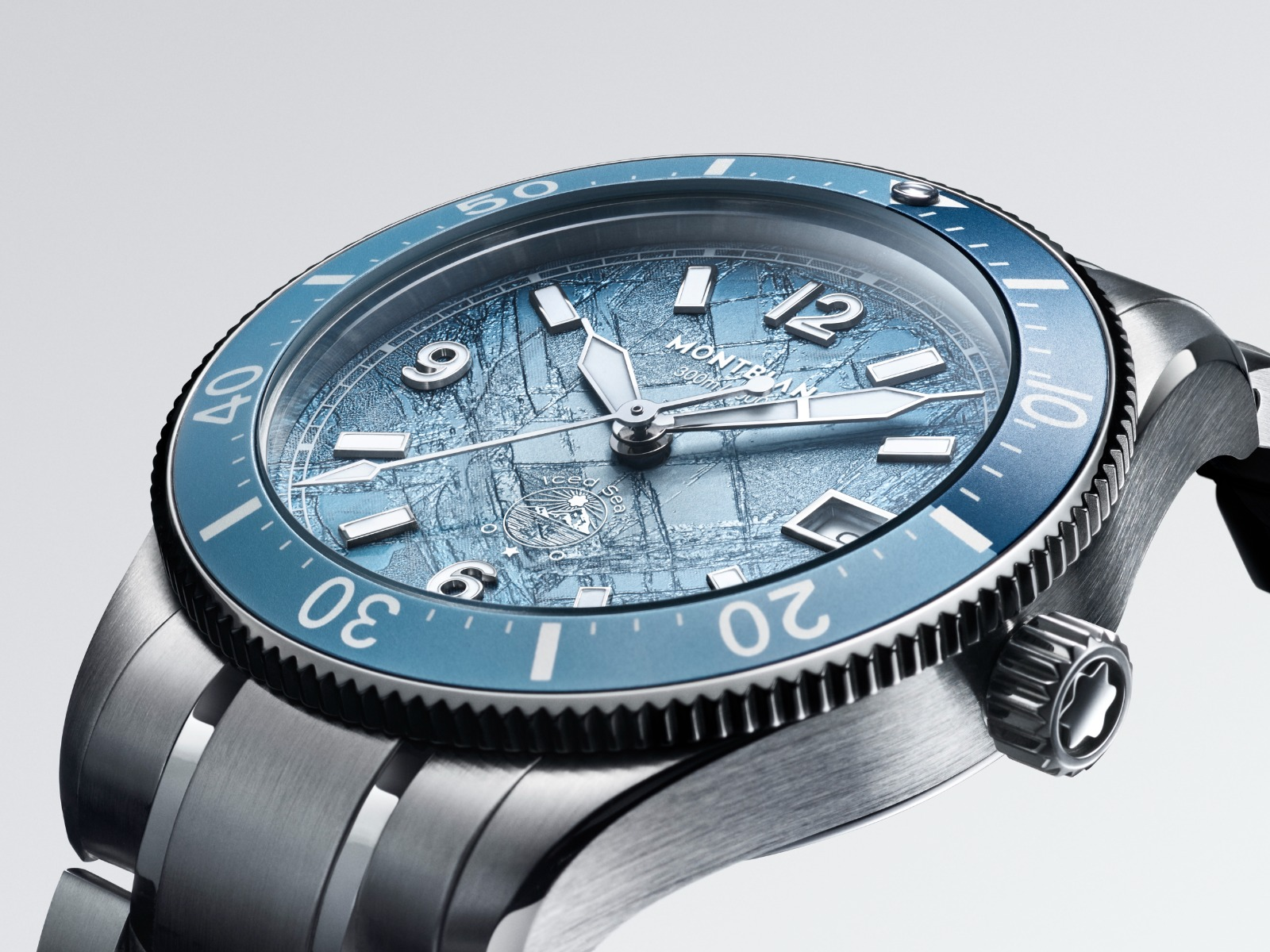Bulgaris Reimagined Serpenti Collection Unleashes the Power of the Snake
Sep 01, 2016

Rich symbolism has always been at the heart of jewellery making. Jewellery worn around the neck and on the arms was thought to protect the wearer, to deliver prosperity, happiness and even love.
The symbols in jewellery are always linked to powerful cultures. In China, the carp was a sign of strength and power, and the bat seen as a symbol of wealth. The scarab beetle was a sign of transformation, rolling in the rising sun each day, a harbinger of rebirth in Egypt.
The symbols that resonate most widely have a universal nature and occupy the myths and legends that are told over and over again. We somehow all understand that wearing a lion pendant gives you bravery and that an elephant-shaped amulet lends intelligence to the wearer. And, of course, there is the serpent. Coiling, strong and mysterious, the serpent is seen to be at once seductive, intellectual, representing everything from wisdom and vitality to cunningness.
Civilisation is deeply intertwined with the sinewy ophidian. The Bible tells us the snake appears in the Garden of Eden to lure Eve to the forbidden fruit in return for knowledge. Here the serpent is identified with wisdom. In Hindu mythology, the deity Naga takes the form of a snake, representing rebirth, death and mortality. The Ancient Greeks depicted the god of medicine as two coiling snakes, a symbol that is still recognised today. Snakes were closely associated with the Egyptian pharaoh, with the motif ever-present in the royal jewels and accessories worn by Cleopatra, herself a reputed beauty and clever leader.

The serpent is a dual expression of both good and evil, but finds unity in one aspect: its powerful gaze. Legends herald the hypnotic capacities of the serpent’s eyes, how they transfix their prey with a look before striking. Medusa’s potent stare would turn onlookers to stone, a power she carried into death.
To this day, Medusa’s image continues to adorn the exterior of buildings for protective purposes. Similarly, a glance of the notorious basilisk depicting the Egyptian goddess of harvest Renenutet was said to slay her enemies.
When Bulgari began to design jewellery using the serpent motif in the 1940s, it was aware of the creature’s symbolism throughout history, and it cleverly adapted it to reflect the brand’s Greco-Roman heritage. From exquisite watches that coil around the wrist, to gleaming high jewellery necklaces that drape elegantly around the neck, the Serpenti, with its unmistakably modern design, has become the maison’s signature emblem, a design motif that is distinctly Bulgari.
This year’s Serpenti collection of rings, necklaces, bracelets and earrings, is entirely reimagined into striking new shapes, with a singular focus on the penetrating stare of the snake. The almond-shaped snakehead design is inspired by Bulgari designs from the 60s and 70s. The hexagonal pattern of the snake’s scales is modernised and interpreted in countless ways, from pink gold versions to more luscious ones encrusted with diamonds.

Gemstones have also come to be recognised as symbols heavily associated with power. In fables and mythology, they are stylised as unique little miracles. Emeralds, green and energising, are said to be the eyes of Mother Nature herself.
In the Serpenti collection, Bulgari adapts the mythology of gemstones, unleashing the beauty in stones. Nuggets of rubies, emeralds and amethysts adorn its snake heads. The gemstones bring beauty to the captivating eyes of the Serpenti and a level of mysticism to an already legendary collection.





























